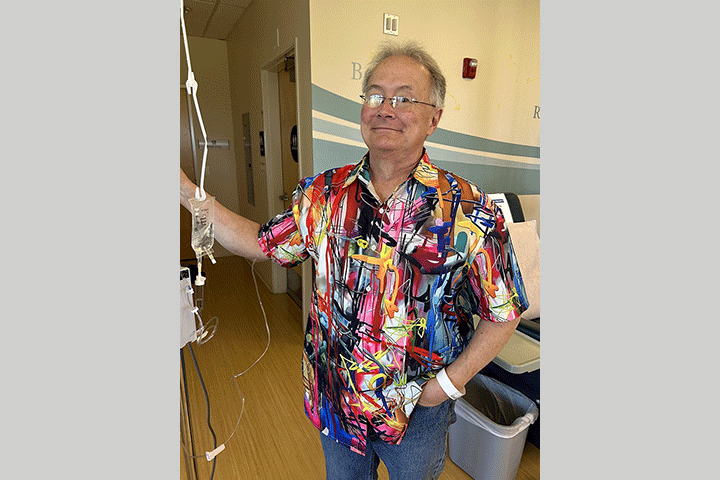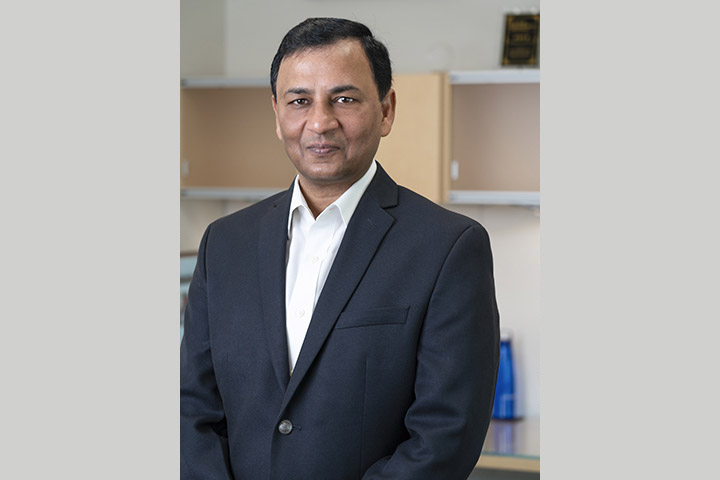A Liquid Biopsy for Pancreatic Cancer

What if pancreatic cancer could be diagnosed with something as simple as a blood test? Experts say that reality isn’t terribly far away.
Today’s diagnostic tools for pancreatic cancer are invasive, expensive, time-consuming and uncomfortable. PET and CT scans don’t come cheap. And tissue biopsies, taken via endoscopy or, more invasively, surgery, are neither pleasant nor convenient, and often need repeating.
But soon, confirming the presence of pancreatic cancer may not take more than a pinprick. “Liquid biopsy”—the diagnostic test of the future—could be headed to a doctor’s office near you, in as little as five or so years. “Our group has been working on this for more than two decades, and the technology is getting better and better,” says Bert Vogelstein, M.D., director of the Ludwig Center for Cancer Genetics and Therapeutics at Johns Hopkins University School of Medicine’s Sidney Kimmel Comprehensive Cancer Center. Vogelstein is the genomics pioneer behind this technology and one of the first discoverers, in the 1980s, that genetic mutations give rise to cancer.
“In the foreseeable future, we imagine that people will be able to go to their annual exam, have their blood taken, and have it be tested for circulating tumor DNA,” he says.
Good news for everyone—especially those at risk for developing elusive pancreatic cancer, for which there is no standardized, early detection screening.
Understanding Cell-Free Tumor DNA
Researchers discovered years ago that the blood of pregnant women contains genetic material—traces of DNA, they later realized, released from growing fetuses.
In later years, it was observed that cancerous tumors, too, shed genetic particles, or cell-free tumor DNA. Finding a way to measure that material, researchers realized, could help with diagnosing cancer, as well as monitoring the disease’s progress or regression.
The challenge in doing so was two-fold. Genetic hallmarks vary from cancer to cancer; identifying specific mutations associated with various types of cancer would be researchers’ first priority. Next, they needed to be able to locate those mutations in a blood sample, a tough task. “Imagine that most of the molecules in a sample of blood are yellow and the mutation is red,” Vogelstein says. “You need to find the one red molecule in a sea of yellow.” Older techniques took the sample and assessed it “en masse to try to find a faint red signal in all the yellow, which was extremely difficult.”
But in the last few years, Vogelstein and his colleagues have honed a more sensitive, effective method: “Instead of looking at it en masse, we look at each molecule one at a time, to check if it’s yellow or red,” he explains, using his analogy. “We can look at tens of thousands, millions of molecules and pick out the single red.”
Liquid Biopsy For Pancreatic Cancer
In 2014, Vogelstein and his colleagues looked at the liquid biopsies of 846 patients with different kinds of cancers, including pancreatic. The tests confirmed the presence of cancer in 80 percent of the patients with advanced disease, and 47 percent of the patients with localized tumors. With funding from the Lustgarten Foundation, Vogelstein and his team are now studying pancreatic cancer patients at various stages of the disease. So far, he says, “we’ve found that somewhere between 40 to 60 percent of localized pancreatic cancers are detectable with liquid biopsies. Obviously we’d like it to be 100 percent, but 40 is better than zero.”
Critics of this burgeoning area of research warn that early screenings for other cancers such as breast and prostate have been associated with overdiagnosis and overtreatment. With regards to prostate, in particular, which tends to be slower-moving and less aggressive, early treatment is often not recommended.
Other questions raised: What if a patient tests positive for a mutation associated with several types of cancer? How would a doctor deliver that news without inspiring potentially unnecessary fear and anxiety?
But the clinic-worthy liquid biopsy of the future will be so finely honed, Dr. Vogelstein says, it will be practically infallible. “We’re looking for something exquisitely specific, so that if we find it, we know that the patient unequivocally has cancer in the body.”
“Pancreatic cancers are particularly suitable for this kind of approach,” he adds, “because the number of mutations you’re looking for is small.” About 90 percent of pancreatic cancers carry mutations of the KRAS gene. (Other cancers, such as lung and colon, are associated with KRAS mutations as well, but more often than not arise in tandem with other gene mutations. For example, when found together, KRAS and EGFR mutations signal lung cancer, not pancreatic. “You never find mutated EGFR with pancreatic cancer,” explains Dr. Vogelstein.)
In addition, pancreatic cancer KRAS mutations occur on a few, localized points in the gene itself. So researchers know precisely what they’re looking for.
For pancreatic cancer—now the third leading cause of cancer death in this country, despite how rarely it occurs compared with other malignancies—early intervention is, undeniably, critical. Liquid biopsies could change the game for existing patients and those at risk for developing the disease. “We know now that in advanced pancreatic cancers, the vast majority can be detected through this liquid biopsy approach,” Vogelstein notes.
But the bigger breakthrough will be finding a way to confirm pancreatic cancer early on, in its nascent stages. “Screening,” says Vogelstein, “is the holy grail.”
Bringing a Test To Market
In the last several months, based on research from Vogelstein and others, pharmaceutical companies have announced their intent to develop liquid biopsies for clinical use. “I’ve been pleased and delighted to see some large companies getting interested in this,” Vogelstein says. “They see the value. Once you see industry get into something, you can be much more certain that it’s going to make its way to the clinic.”
For pancreatic cancer patients, a viable test would arrive not a moment too soon.
“So much research now is directed at finding therapies, but prevention can reduce deaths, too,” says Vogelstein. “We want to catch these cancers earlier to make treatment more effective.”






